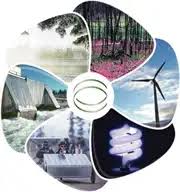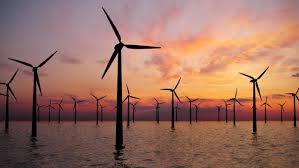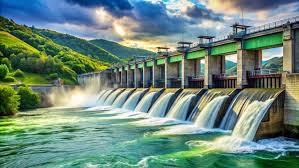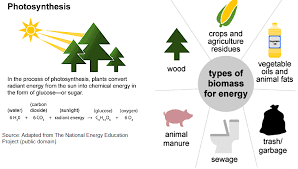Understanding Renewable Energy
Energy as we know provides the capacity to do work or cause a change. Knowing this, it will be safe to say that energy demands will always be on the increase as it is a major player in every economy.
Energy demand comes with a great price though; a burden that is too heavy for most corporations and individuals to pay. Generating energy can come with heavy environmental pollution amongst other hazards.
We are all (should be) responsible for searching for solutions to the problems caused by these high energy demands.
In recent years, the discourse surrounding energy production has increasingly moved towards sustainability thus, gravitation towards net zero has received an amazing boost.
As the effects of climate change become ever more pronounced, the necessity to transition from fossil fuels to renewable energy sources has gained unprecedented urgency and attention.

Renewable energy refers to energy derived from resources that are naturally replenished over short timeframes, enabling a more sustainable approach to energy production.
Unlike fossil fuels, which take millions of years to form, renewable sources such as sunlight, wind, and water are abundant and inexhaustible.
The primary categories of renewable energy sources include solar, wind, hydroelectric, biomass, and geothermal energy.
Each source has distinct characteristics that contribute to a more sustainable energy landscape when harnessed and managed correctly.
The report ‘Africa’s Energy Outlook 2023: Renewables as the Pathway to Energy Prosperity,’ prepared by Deloitte, emphasizes the abundant renewable energy resources available in Africa and the world.
However, it underscores the persistent challenge of widespread energy poverty and the environmental consequences of over-reliance on fossil fuels.
This paradox can only be resolved through the development of smart and sustainable materials, innovative scientific ideas, and efficient tools to harness and convert natural energy resources to clean, usable fuels, ultimately driving economic prosperity.
This blog post delves into various renewable energy sources, elucidating their mechanisms, advantages, and potential role in a sustainable future.
Solar Energy
Solar energy harnesses the sun’s radiation through photovoltaic cells or solar thermal systems.
Photovoltaic panels convert sunlight directly into electricity, while solar thermal systems use sunlight to produce heat, which can be used for electricity generation or direct heating purposes.
In recent years, cost reductions in solar technology have made it one of the fastest-growing energy sectors, with installations increasing globally.
It is expected that solar energy source will cause a remarkable advancement in the electric vehicle (EVs) industry. Salt Hub is dedicated to seeing how the EV industry will transit quicker and depend solely on solar sources for electricity.
Ongoing advancements in solar technology are improving efficiency and lowering costs, making solar energy increasingly accessible.
Advantages of Solar Energy
- Environmental Benefits: Solar energy significantly reduces greenhouse gas emissions, contributing to cleaner air and combating climate change.
The reduction of fossil fuel dependence decreases particulate matter and other harmful byproducts.
- Economic Savings: Over time, the reduction in electricity bills can be substantial. As solar panels have become more affordable, homeowners and businesses alike are investing in solar energy to achieve significant long-term savings on energy costs.
- Job Creation: The solar industry has rapidly grown, providing numerous job opportunities across various sectors, from manufacturing to installation.
This growth contributes to local economies, especially in regions where solar farms are established.
- Energy Independence: Utilizing solar energy reduces reliance on imported fossil fuels, enhancing national energy security. Countries can produce their energy sustainably, fostering local industries.
- Versatility: Solar panels can be installed in various locations, from residential rooftops to large solar farms, making them suitable for diverse applications and settings.
- Grid Stability: Distributed solar energy systems can enhance the resilience of the electricity grid, reducing the risk of blackouts and contributing to energy security.
- Incentives and Rebates: Many governments offer financial incentives, tax credits, and rebates for individuals and businesses to install solar panels, making the initial investment more affordable.
Limitations of Solar Energy
- Weather and Geographic Limitations: The effectiveness of solar energy can vary significantly by location. Regions with less sunlight or extreme weather conditions may not generate enough solar power to be practical. Advancements in the Internet of Things (IoT) can significantly help here.
- Efficiency Limits: Current solar panel technologies have efficiency limits, typically converting only 15-22% of sunlight into electricity. While advancements are ongoing, achieving higher efficiencies remains a challenge.
- Grid Integration: Integrating solar energy into existing power grids can pose technical challenges. Upgrading the grid infrastructure, making it more flexible and capable of handling distributed energy sources, can be costly and complicated.
- Energy Storage Costs: To provide a consistent energy supply during non-sunny periods, solar systems often require battery storage.
High-quality battery systems can be expensive, and their lifespan may be limited, increasing overall costs. Advancements in battery technology can significantly help the sustainability of solar energy.
Despite these shortfalls, ongoing technological innovations and policy support continue to mitigate many of the challenges associated with solar energy.
Wind Energy
Wind energy is generated using wind turbines that convert the kinetic energy of wind into mechanical power, which is then converted into electricity.

Wind farms, consisting of multiple turbines, are installed in areas with consistent and strong winds.
Technological advancements have increased the efficiency and placement of turbines, allowing wind energy to thrive in diverse environments, including offshore locations.
Advantages of Wind Energy
- Clean and Renewable: Wind energy is one of the cleanest forms of energy, as it involves no emissions during operation. Its utilization significantly lowers greenhouse gas emissions.
- Land Use: Wind farms can coexist with agricultural land, allowing for dual land use without significant conflict. Farmers can continue to work the land while reaping additional income from wind energy production.
- Low Operational Costs: Once established, wind energy systems generally have low operational and maintenance costs. The simple mechanics of turbines reduce the need for extensive upkeep.
- Scalability: Wind energy systems can be deployed on both small and large scales, making it versatile enough for individual households and large utility providers.
- Land Use Efficiency: Wind turbines can be installed on agricultural land, allowing for dual land use where farming can continue alongside energy production. This minimizes the negative impact on land use.
- Rapid Deployment: Wind farms can be constructed relatively quickly compared to other energy infrastructure projects, allowing for faster integration into the energy mix.
Limitations of Wind Energy
- Limited Energy Density: Wind energy has a lower energy density per unit area compared to some other energy sources, meaning that larger land areas are often required to capture sufficient energy.
- Site Suitability: Optimal wind energy generation requires specific geographic locations with consistent and strong wind patterns. Not all areas are suitable for wind farms, which can limit potential sites.
- Noise Pollution: Wind turbines can create noise during operation, which may be a concern for people living near wind farms. This noise can cause local opposition to new wind energy projects.
- Maintenance Needs: Wind turbines require regular maintenance to ensure optimal performance and reliability. While maintenance costs are generally low, they can accumulate over time, especially for older turbines.
- Energy Storage Costs: To manage the variability of wind energy, effective energy storage solutions, such as batteries, may be needed. These systems can be costly and add to the overall expense of wind energy projects.
Hydroelectric Energy
Hydroelectric energy is produced by harnessing the power of flowing water. It is derived from the natural water cycle, making it a renewable energy source that can be harnessed repeatedly as long as water flows.

Dams are commonly used to create reservoirs, and when water is released, it spins turbines that generate electricity.
Hydroelectric power is one of the oldest and most established forms of renewable energy, accounting for a significant percentage of the global electricity supply.
Advantages of Hydroelectric Energy
- Reliability: Hydroelectric power plants can produce electricity consistently, providing a stable energy supply even during extreme weather conditions. This reliability is pivotal for baseload electricity generation.
- Energy Storage: Pumped-storage hydroelectricity allows for the storage of energy that can be released during peak demand periods. This capability enhances grid stability and manages energy fluctuations.
- Environmental Management: Properly managed hydroelectric plants can enhance local ecosystems by promoting biodiversity and providing water management solutions.
- Economic Benefits: Hydroelectric power is often cheaper in terms of generation costs compared to fossil fuels, leading to lower electricity prices for consumers.
- Low Greenhouse Gas Emissions: Once operational, hydroelectric plants produce little to no greenhouse gas emissions, contributing to the reduction of climate change impacts compared to fossil fuel-based energy sources.
- Reliable and Stable Energy Supply: Hydroelectric power plants can provide a consistent and reliable source of energy, as they can generate electricity whenever there is sufficient water flow, including during peak demand periods.
- Cost-Effective: While the initial investment for constructing hydroelectric plants can be high, the long-term operating and maintenance costs are relatively low, making hydroelectricity a cost-effective energy source over time.
- Minimal Land Footprint: Compared to wind and solar projects, hydroelectric plants can have a smaller land footprint once built, as they primarily utilize the energy of flowing water without requiring extensive land use for their operation.
Limitations of Hydroelectricity
- Operational Risks: Dam failures, although rare, can have catastrophic consequences, leading to flooding, loss of life, and significant property damage downstream.
- Potential for Climate Change Impact: Changes in precipitation patterns and water availability due to climate change may affect the reliability and efficiency of hydroelectric generation in the future.
- Impact on Water Quality: Reservoirs can lead to changes in water temperature and oxygen levels, which can adversely affect water quality and aquatic habitats.
- Displacement of Communities: Large hydroelectric projects often require the flooding of land, which can displace communities and affect local populations, leading to social and economic disruption.
- Dependence on Water Availability: Hydroelectric power generation is directly tied to water availability, which can be affected by seasonal changes, climate conditions, and prolonged droughts. This variability can limit power generation during dry periods.
Biomass Energy
Biomass energy comes from organic materials, such as plant and animal waste. It can be converted into electricity, heat, or biofuels through various processes, including combustion and fermentation.

Biomass can be sourced from agricultural residues, wood, and dedicated energy crops.
Advantages of Biomass Energy
- Waste Reduction: Utilizing organic waste for energy reduces landfill contributions and can minimize methane emissions, a potent greenhouse gas produced during the decomposition of organic matter.
- Carbon Neutrality: Biomass is often considered carbon neutral because the carbon dioxide emitted during its combustion is offset by the carbon dioxide absorbed by plants during their growth. This cycle can potentially lead to a balanced carbon footprint.
- Energy Independence: Biomass can be produced locally, reducing reliance on fossil fuel imports. This aspect is particularly advantageous for rural economies, which can benefit from local energy production.
- Waste Management: Biomass energy can utilize agricultural, industrial, and municipal waste products. This provides an effective means of waste management, reducing landfill use and associated environmental problems.
- Versatility: Biomass can be converted into various forms of energy, including electricity, heat, and biofuels (like ethanol and biodiesel), making it a versatile energy source that can meet diverse energy needs.
- Increased Soil Health: Some biomass energy practices, like returning ash from biomass combustion to the soil or using residues as fertilizers, can enhance soil quality and promote sustainable agricultural practices.
Geothermal Energy
Geothermal energy exploits heat stored beneath the Earth’s surface, utilizing steam or hot water from geothermal reservoirs for electricity generation or direct heating purposes.

This energy source is particularly effective in regions with high volcanic activity, where geothermal resources are abundant.
Advantages of Geothermal Energy
- Constant Energy Supply: Geothermal power generation is not reliant on weather conditions, making it a stable energy source that can provide baseload power.
- Small Footprint: Geothermal plants occupy relatively small land areas compared to other renewable energy sources, preserving natural habitats and allowing for the conservation of biodiversity.
- Longevity and Sustainability: Geothermal resources have the potential to provide energy for several decades, ensuring long-term energy stability without depleting the resource.
- Low Emissions: Geothermal power plants produce minimal greenhouse gas emissions compared to fossil fuel power plants, making them more environmentally friendly.
- Enhanced Efficiency: Geothermal heat pumps are highly efficient for heating and cooling buildings, as they use the stable temperature of the ground, resulting in reduced energy consumption and lower utility bills.
- Base Load Power Generation: Geothermal energy can provide baseload power, meaning it can consistently supply electricity at a steady rate, which is essential for meeting the continuous demands of the power grid.
Limitations of Geothermal Energy
- Location Specificity: Geothermal energy resources are not uniformly distributed; they are typically located near tectonic plate boundaries or volcanic activity. This can limit the availability of geothermal energy to certain regions, making it less accessible in areas without these geological features.
- Environmental Concerns: While geothermal energy has lower emissions compared to fossil fuels, it can still pose certain environmental risks. These may include land subsidence, water contamination, and the release of greenhouse gases (such as sulfur dioxide or carbon dioxide) from the Earth’s crust during drilling.
- Technical Challenges: The technology for geothermal energy extraction and utilization is complex and requires specialized knowledge and skills, which can pose challenges in terms of development and maintenance.
- Induced Seismicity: The injection of water (in enhanced geothermal systems) or the extraction of geothermal fluids can sometimes induce seismic activity, leading to minor earthquakes in the vicinity of geothermal sites.
The Role of Renewable Energy in the Future
As nations grappling with climate change seek sustainable solutions, renewable energy sources are increasingly viewed as integral components of energy policy.
The global commitment to reducing carbon emissions necessitates a shift towards renewable energy technologies, with many countries setting ambitious targets for renewable energy adoption.
Policy Support and Innovation
Governments worldwide are implementing policies aimed at incentivizing the adoption of renewable energy.
Financial incentives, research and development grants, and regulatory frameworks are fostering innovation in clean energy technologies. These efforts not only facilitate energy transition but also stimulate economic growth through green jobs.
Countries like Germany and Denmark have successfully integrated large proportions of renewables into their energy mix, serving as models for others. It will be great if as individuals, countries and continents switch to renewable energy resources.
Challenges and Considerations
While the transition to renewable energy is essential, several challenges must be addressed:
- Intermittency: Solar and wind energy production can be inconsistent based on weather patterns and time of day. Energy storage solutions, such as batteries, are crucial for mitigating this challenge and ensuring a reliable energy supply.
- Infrastructure Needs: The existing energy grid often requires upgrades to accommodate decentralized energy production sources. Investments in smart grid technologies can enhance the integration of renewables into existing infrastructures.
- Initial Costs: Although long-term savings are promising, the initial capital investment for renewable energy infrastructure can be substantial. Financial models and incentives can help to alleviate this barrier.
- Public Acceptance: Community support is vital for the successful deployment of renewable energy projects. Educational campaigns and stakeholder engagement are crucial for addressing concerns and promoting the benefits of renewable energy systems.
Conclusion
Renewable energy sources present a compelling pathway to a sustainable future. By harnessing natural processes, we can mitigate the adverse effects of climate change, enhance energy security, and stimulate economic growth.
The transition from fossil fuels to renewable energy is not just a possibility; it is an imperative. As technology evolves and public policy aligns with environmental goals, the global energy landscape is poised for a transformative shift toward sustainability.
The urgency to embrace renewable energy is greater than ever, not only for environmental reasons but for ensuring energy access, economic stability, and the well-being of future generations.
The time to invest in renewable energy solutions is now, for the benefit of both current and future populations.
